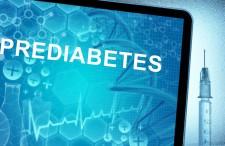The renewed campaign against Type-2 diabetes is in full force with the launch of DoIHavePrediabetes.org, the Centers for Disease Control and Prevention's most recent, well-meaning, but largely misguided effort. By utilizing a new screening tool, the federal health agency, which is partnered in the effort with the American Medical Association and the American Diabetes Association, is trying to encourage Americans to take an active role in managing their health -- which, of course, is a welcome goal. But in a medical environment often plagued by over-diagnosis and over-prescription, is this new tool -- which could potentially impact more than 80 million people -- really necessary?
It seems like everyone has some kind of condition these days. For example, a fidgety kid suffers from hyperactivity, so what was once considered fairly-common excitability is now considered some sort of drug-treated disorder. While a few forgetful episodes by grandpa, and the next thing you know red flags start flying that he's on an irreversible path towards Alzheimer's.
Of course, early detection of an illness -- chronic disease, in particular -- is encouraged. But where do we draw the line between practical caution and harmful zealousness? Which brings us to the concept of "prediabetes."
First, what is it, and how is it identified? Upon examination, the classification process behind DoIHavePrediabetes.org appears to be oversimplified, and it puts just about everyone at some degree of risk simply because they are ... human.
The CDC estimates that over 86 million people could be potentially affected by the condition, defined as having higher than normal blood glucose levels, but not quite high enough to be clinically diagnosed as diabetic.
What's more, in its attempt to shed light on Type-2 diabetes as an important health issue, as well as to empower individuals, this medical classification might actually end up having the opposite effect. Instead of prompting a so-called prediabetic to take action, that person could be just as likely to suffer from analysis paralysis and misplaced fear, by a "diagnosis" that prompts him/her to avoid treatment and take no action at all.
Now to better understand the evaluation process, let's break down the prediabetes screening tool, aka "The Risk Test." Participation is simple: Visit the site and take a short, one-minute quiz consisting of just seven questions ranging from: "Are you a man or a woman?" to "What is your age?" to "Are you physically active?"
Based on your answers, the quiz spits out a score on a 1-to-10 scale predicting the likelihood of a prediabetes diagnosis. You can then take your results from the self-administered exam -- which is conveniently taken in a matter of moments from your smartphone, iPad or computer -- and present them to your doctor.
The goal of the test is to develop an action plan based on your low-, moderate-, or high-risk classification of developing full-blown Type-2 diabetes. Unfortunately, the validity of the screening tool is undermined by a digital device's lack of finger-pricking capabilities.
That is, it's not possible -- at least for now -- for the DoIHavePrediabetes.org quiz to take into account what's called the A1C test, which is a measure reflecting a person's average blood glucose levels over the previous three months. The test is used to clinically detect Type-2 diabetes, so the absence of an A1C measure gives the quiz and subsequent diagnosis much less clout. So, is prediabetes really a legit condition, or is it just poised to take up space in the medical manual? Is the "Risk Test" worth the 60 seconds?
To answer that, first consider this: On the list of leading causes of premature deaths in the U.S., diabetes ranks #7. Nearly 235,000 death certificates per year indicate diabetes as a contributing or underlying cause. So, while Type-2 diabetes prevention is something undoubtedly worthy of attention, the push towards public acceptance of this newly-coined condition, that can affect tens of millions of otherwise healthy individuals, seems somewhat unnecessary.
There are plenty of measures we can take to help prevent Type-2 diabetes, such as eating better and exercising more. We don't need yet another premature, incomplete clinical diagnosis to prompt us to take action.



